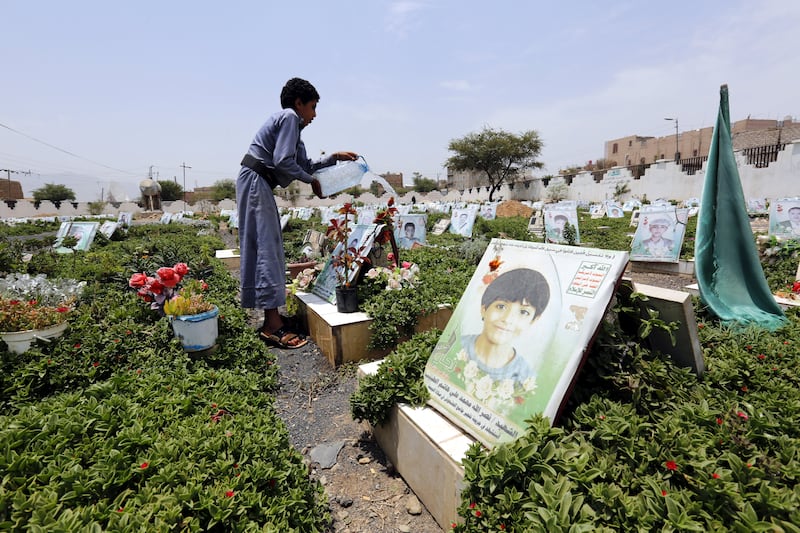Suicide, murder, rape and mental health conditions are skyrocketing in a stretch of Muslim-majority countries from Morocco to Pakistan, many of which have been wracked by violence and conflict.
A major study covering data from the last 25 years shows soaring rates of death by suicide or at the hands of others. In 2015 alone, the last year for which data was used, around 30,000 people committed suicide, while 35,000 were murdered. The figures do not include deaths in places which are at war, such as Syria and Iraq, and represent increases of 100 per cent and 152 per cent respectively since 1990.
The study was conducted by researchers at the University of Washington’s Institute for Health Metrics and Evaluation (IHME).
"In other parts of the world during the same period, the number of deaths from suicide increased 19 percent and interpersonal violence by 12 percent,” stated one of the 15 reports published this week in the International Journal of Public Health.
Read more: The death of hope is the greatest tragedy of the Syrian conflict
[ Premature babies and sick children at risk from Gaza's constant blackouts ]
[ The unbearable reality of being a child in a conflict zone ]
The researchers also found a “sharp increase” in mental health conditions such as depression, anxiety, bipolar disorder and schizophrenia. “Depression and anxiety disorders were the most common mental conditions,” according to the study.
“Intractable and endemic violence is creating a lost generation of children and young adults,” said Dr Ali Mokdad, the study’s lead author and the Director for Middle Eastern Initiatives at IHME. “The future of the Middle East is grim unless we can find a way to bring stability to the region.”
The research showed that the wars in Yemen, Iraq and Syria in particular are taking a severe toll on the health of the population in those countries. Not only are the effects immediate in terms of death and injury, but “these events will lead to increased health burden in the future as the next generation…is being raised under the harsh conditions of malnutrition and lack of preventive health services.”
Yemen has the highest proportion of its population suffering from food insecurity,at 36 per cent.
Despite the fast increasing need for mental health professionals to address the psychological fallout of conflict and poverty, the region has very few psychiatrists and psychologists. Many of the countries have only 0.5 psychiatrists for every 100,000 people. By comparison, Europe has more than 40 per 100,000.
The study was conducted using estimates from the annual Global Burden of Diseases, Injuries, and Risk Factors study and focused on the 600 million people of the “Eastern Mediterranean”, which includes 22 countries from the Maghreb, Horn of Africa, the Middle East — including the GCC — and Afghanistan and Pakistan.
The geographical area has endured, to varying degrees, conflict for decades.An estimated 208,179 people were estimated to have been killed by war, suicide and murder in 2015, of which 144,000 died in war. Such estimates are almost always below the true figures due to the difficulties of collecting reliable data in war zones.
Read more:Mosul's children have 'lost the ability to be children'
Comment:We need a new understanding of the social contract between Arabs
But violence and the associated psychological disorders are not the only alarming findings about the region’s health trends.
“In recent years, many of the health gains for some countries have slowed and several health conditions that were under control are re-emerging," Dr Mokdad said. “This study clearly indicates that the future health of the region is in danger.”
Even the wealthiest per capita countries of the GCC will be affected directly or indirectly by the impact of global warming and climate change. Some of the countries “face significant environmental challenges due to lack of water, rising temperatures, and sandstorms,” the study found. Air pollution also needs to be addressed.
In the UAE, Qatar and Oman, transport-related accidents were the second highest cause of death in 2015, at 14 per cent, 20 per cent and 16 per cent respectively. While such deaths are falling in all the countries except Libya, Pakistan and Egypt, they were doing so at a slower rate than elsewhere in the world.
The overall level of obesity in the Eastern Mediterranean has increased by 37 per cent since 1980, the study, but obesity is most prevalent in Qatar and Kuwait.
Child mortality also fell more slowly than the global rate in many of the 22 countries. Sudan, Pakistan and Afghanistan are all in the top ten countries with the highest child mortality rates. Eighty per cent of all child deaths occurred in those three countries along with Somalia, South Sudan and Yemen.
The study also found that most of the cases responsible for a tenfold increase in HIV and Aids-related deaths in the last 25 years occurred in three Horn of Africa countries — Djibouti, Somalia and Sudan.
"In this region, individuals infected with HIV are dying faster than the rest of the world,"said Charbel El Bcheraoui, assistant professor at IHME. ”This is a sign that HIV patients are not receiving proper treatment in an era where HIV can be well controlled with the appropriate treatment regimens."
The countries studied are: Afghanistan, Egypt, Bahrain, Djibouti, Iraq, Iran, Jordan, Saudi Arabia, Kuwait, Lebanon, Libya, Morocco, Oman, Pakistan, Palestine, Qatar, Yemen, Somalia, Sudan, Syria, Tunisia, and the UAE.





